
Helpful Newsletters for Keeping Up with eCommerce Trends

The world of eCommerce is an ever-changing landscape that continues to expand and grow daily. For those in the eCommerce industry whether they are a merchant, a business owner, developer or digital marketer, keeping up with eCommerce trends is crucial. For many, spending precious time on classes, networking, or attending events is difficult to work into busy schedules.
Most eCommerce professionals are running short on time and are merely doing the necessary work required to keep the machine running. For busy professionals, a great way to stay in the know on industry updates is by subscribing to newsletters. Some of the top thought-leaders in eCommerce are cranking out fantastic content at an astounding rate. One of the best – and quickest – ways to brush up on eCommerce trends and learn new tips is to follow the best in the business.
Below is a list of some of the top newsletters available for keeping up with eCommerce trends.
1. Practical eCommerce

A favorite source for all things eCommerce, Practical eCommerce is an excellent resource for all types of online merchants. Practical eCommerce offers articles on analysis and strategy for online merchants. Their favorite topics include Amazon news, SEO tips, advice on reading analytics, marketing help, design trends, payment options, social media, and more.
Sign up here for the Practical eCommerce Monthly Newsletter.
2. The Moz Blog
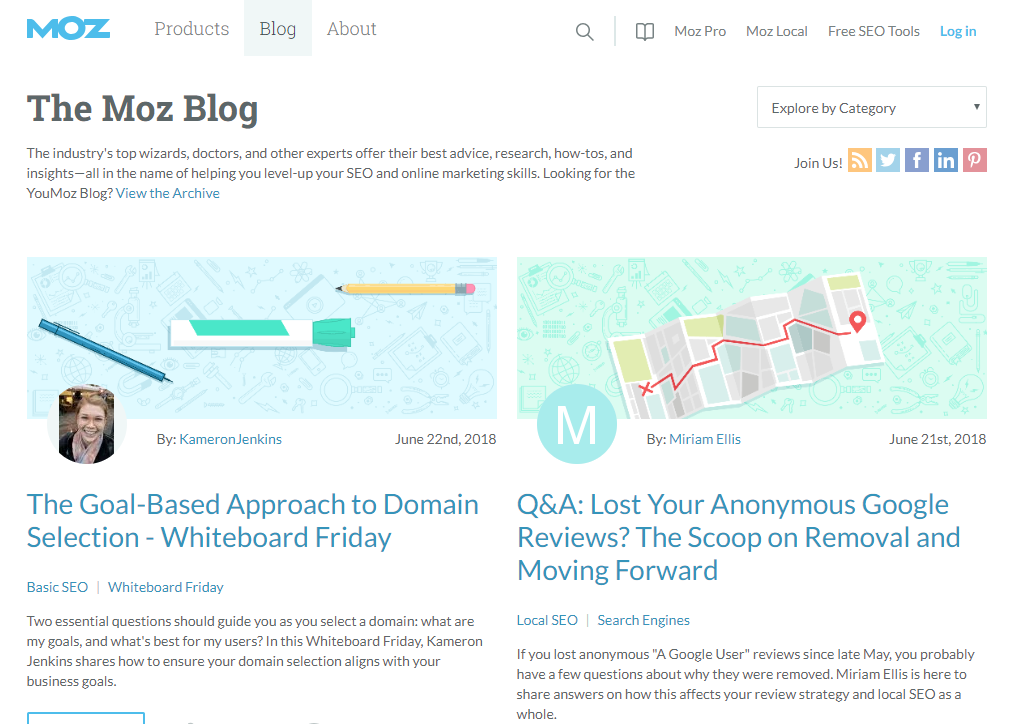
The Moz blog is arguably the best resource for staying in the know on Search Engine Optimization. The blog and newsletter offer advice and how-tos on everything from simple SEO fixes to Google update announcements and even content strategy. A notable highlight is their WhiteBoard Friday feature. Usually, in the form of a video, Moz offers excellent explainer videos that are beyond helpful. Also, Moz focuses on inbound marketing and SEO tips, tricks, and advice for improving websites and tips for optimizing search, social, content, and brand marketing.
Sign up here for the Moz Blog and Newsletter.
3. Commerce Hero

For merchants and developers in the Magento community, Commerce Hero offers excellent insight into Magento Developer trends and news. Commerce Hero is also an excellent resource for finding and hiring Magento Developers. Founded by Kalen Jordan, a well-known developer in the Magento community, the thought-leader provides plenty of videos featuring other Magento community members on relevant topics such as building a team, re-platforming in eCommerce, and freelancing tips.
Sign up here for the Commerce Hero Newsletter.
4. Magento Monday
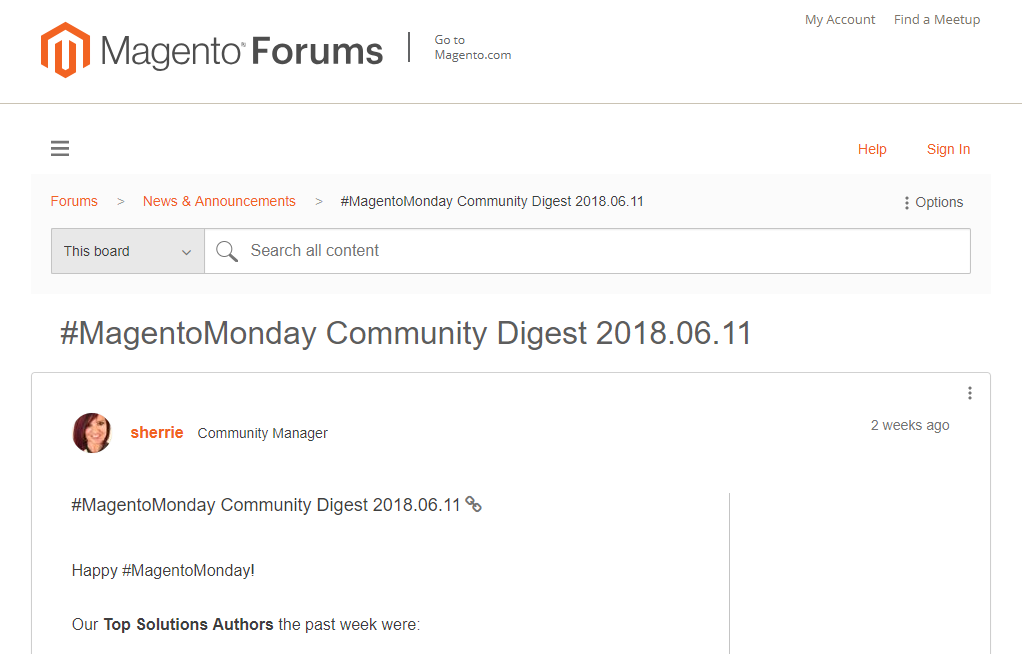
A Magento Community Digest, Magento Monday is a news roundup of all things Magento and community-related. Created by Sherrie Rhode, Magento Community Manager, the digest is published every Monday and cultivated from content posted the previous week from developers and agencies around the world. The weekly digest is a great way to read about Magento tips, news, events, from the entire Magento community.
Sign up here for the Magento Monday Community Digest.
5. Skubana
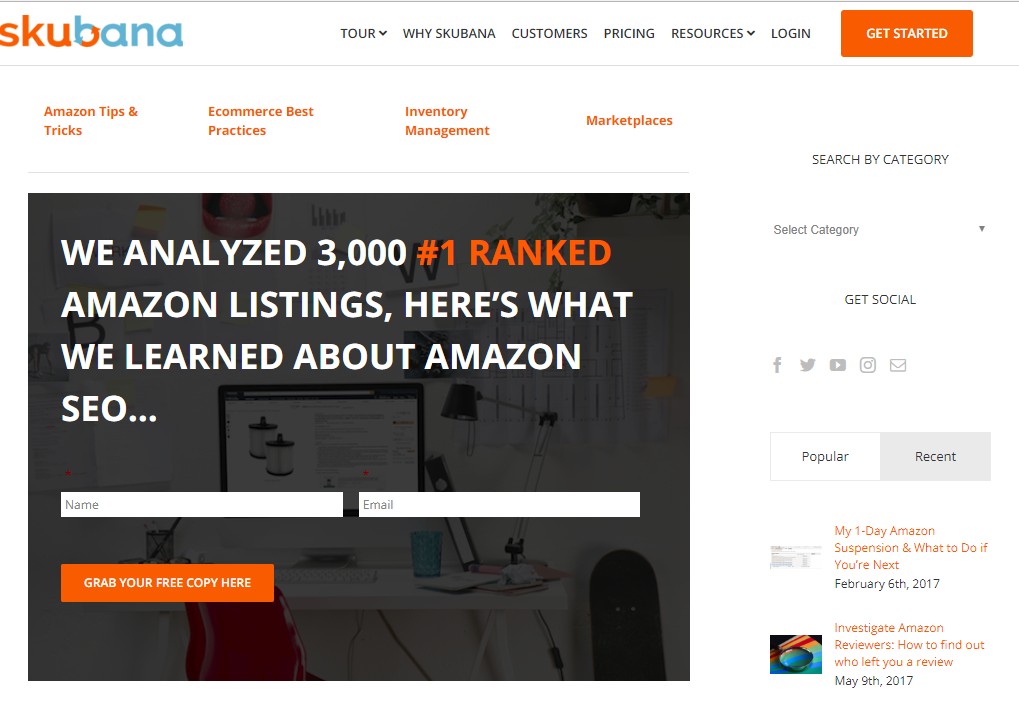
For merchants selling via 3rd party sources, Skubana offers valuable content on everything for multi-channel eCommerce businesses. Skubana is as an Enterprise Resource Planning (ERP) software system with the goal being to act as the “central nervous system” of operations and to unify all the tools needed to run an eCommerce business. The content they produce truly does offer help and assistance with streamlining all aspects of an eCommerce business. Notably, the Skubana team has an eye for multi-channel and 3rd party integration and provides excellent resources for selling on Amazon.
Sign up here for the Skubana Blog and Newsletter.
6. Dotmailer

Dotmailer is an eMail automation platform built for small and medium-sized eCommerce merchants. One of Dotmailer’s selling points is that it was created by marketers, for marketers. Through their content, it’s clear that it is cultivated by talented marketers. Dotmailer discusses all topics and strategy relevant for eCommerce eMail marketing. Notably, Dotmailer delivers valuable benchmark reports. The reports are a great way to evaluate performance against others in the industry.
Sign up here for the Dotmailer blog and newsletter.
7. Hubspot
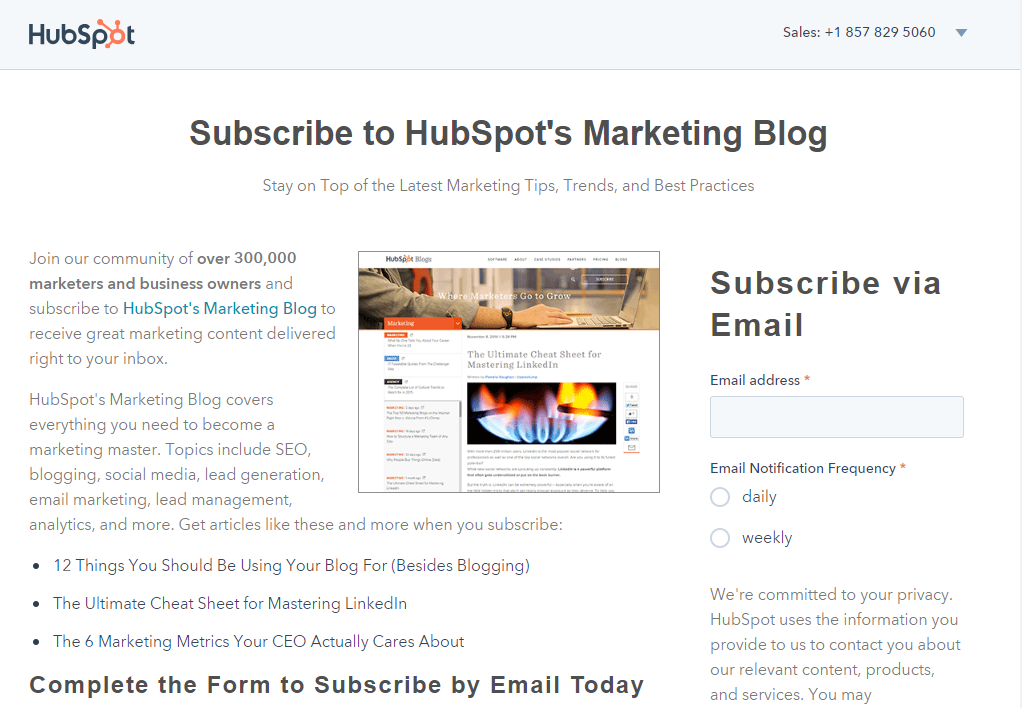
As one of the most popular inbound marketing and marketing automation platform, Hubspot is a proven resource for all things marketing related. Hubspot offers e-books, guides, free templates, and reports with an endless supply of information. Covering all aspects of inbound marketing to general productivity help, Hubspot is an excellent resource for the eCommerce industry.
Sign up here for the Hubspot blog and newsletter.
8. SEMrush
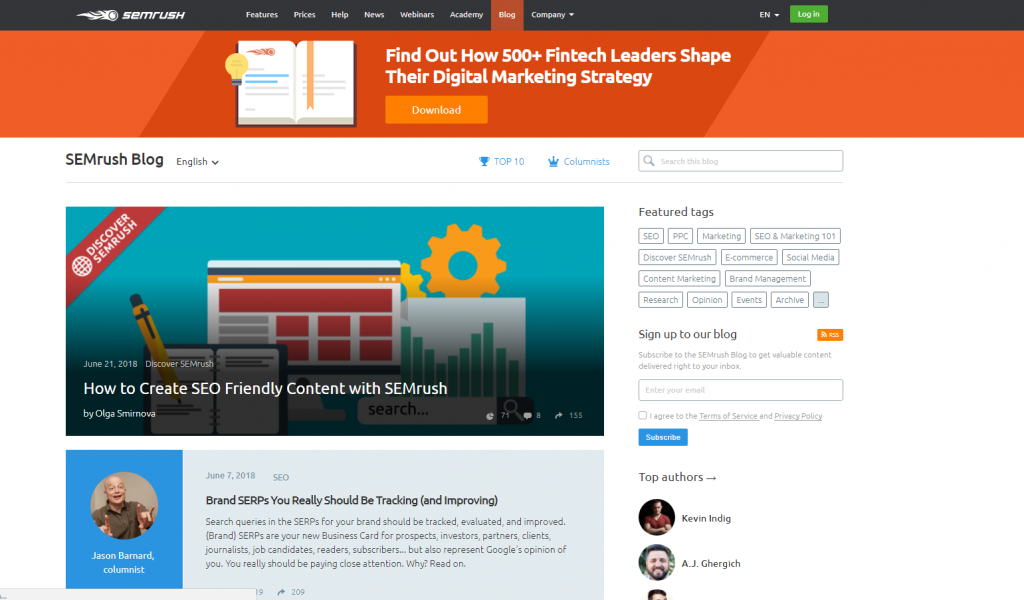
The robust online marketing intelligence tool, SEMrush creates valuable content on the technical aspects of SEO and PPC. Offering content on SERP updates, PPC best practices, link building, technical fix how-to’s and more SEMrush is an excellent blog and newsletter worth subscribing.
Sign up here for the SEMrush blog and newsletter.
9. CMO.com
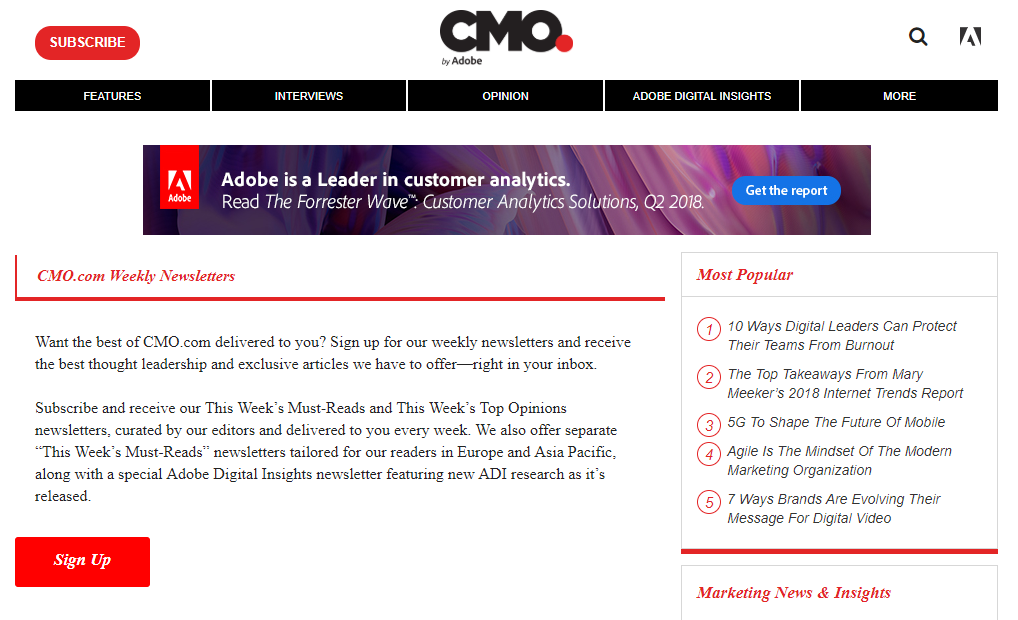
CMO by Adobe offers marketing insights, expertise, and strategies aimed at helping CMOs, senior marketers, and their teams deliver standout digital experiences. CMO offers excellent content and examples for managing teams and building successful marketing departments. The marketing resource giant also conducts interviews with marketing leaders across many industries, providing an outlook and insight into other company challenges and successes.
Sign up here for the CMO blog and newsletter.
10. inVision

A creative design resource tool focused on helping to provide better user experiences, inVision is also an excellent resource for keeping up with app and website design trends. For those with an interest in digital design for all types of mediums, inVision provides plenty of creative and helpful content on UX/UI, research, interviews, and business.
Sign up here for the inVision blog and newsletter.
11. Shopify

The popular eCommerce platform, Shopify, is also a fantastic resource for all things eCommerce. Their blog tagline states “Free Business Lessons,” and the team at Shopify provides just that. The blog discusses all types of topics relevant to eCommerce merchants including tips on customer service, entrepreneurial advice, digital marketing, accounting, merchant case studies, strategy for selling online, product layout tips and so much more. Shopify truly delivers when it comes to useful content that isn’t just about their platform.
Sign up here for the Shopify blog and newsletter.
12. Orange Report
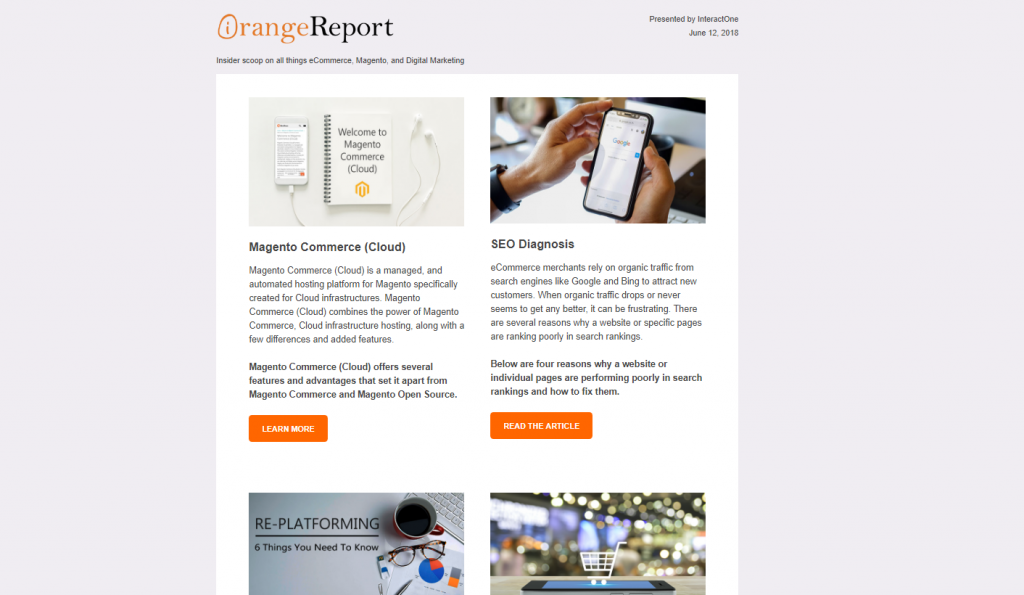
For those who are currently not subscribed to our blog and newsletter, the Orange Report, they’re missing out! Our content is curated to assist eCommerce merchants with all aspects of eCommerce from advice on building an in-house eCommerce team to digital marketing strategy tips and even development tricks and news for Magento.










